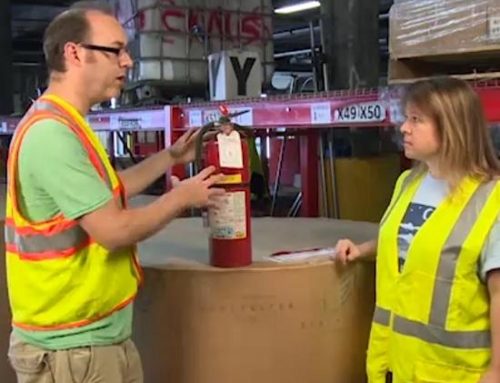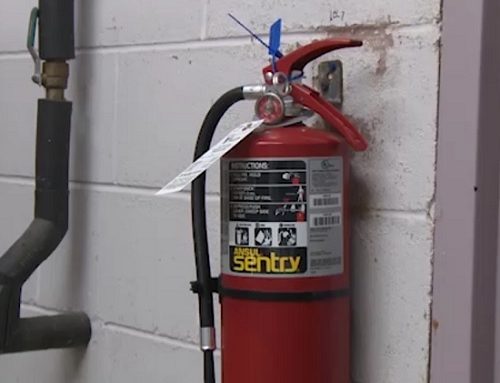I. Introduction
Exit signs are instrumental in maintaining safety, complying with regulations, and safeguarding the lives of employees and visitors. In this comprehensive guide, we explore why it is vital for business owners to have proper exit signs in their establishments.
Exit signs are more than mere markers; they are lifesaving tools during emergencies such as fires, power outages, or other crises. These signs lead people to the nearest exit, enabling quick and orderly evacuation. Without clear exit signs, panic and confusion can lead to chaos, causing potential injuries and threatening lives.
The investment in proper exit signage is not just about meeting legal requirements but about creating an environment where staff and visitors know that their safety is a top priority. The type of exit sign, its placement, and regular maintenance all play a crucial role in ensuring that everyone within the premises can exit quickly and safely in an emergency. This commitment to safety manifests itself in various ways and has a broad impact on both employees and customers alike.
II. Understanding the Purpose of Exit Signs
Not only are exit signs essential for safety, but they also ensure regulatory compliance. Local building codes and fire safety regulations often require exit signs in commercial establishments. Non-compliance can result in fines, business closure, or legal actions. By adhering to these rules, business owners exhibit their commitment to safety standards.
Exit signs must be easily seen from any point within the premises. Their placement should ensure visibility, unobstructed by objects or obstacles, even in low-light conditions like smoke-filled rooms. This involves planning the layout, considering architectural features, and even adapting the signs to those with visual impairments.
Compliance with specific standards in design and functionality is also crucial. The sign must be well-lit and feature the word “EXIT” or an equivalent symbol recognized internationally. The sign’s color, size, and positioning must align with local regulations, providing clear direction without causing confusion. Implementing the right exit signs not only meets regulations but contributes to a safe and seamless evacuation experience.
III. Importance of Exit Signs for Emergency Situations
Clear and visible exit signs are indispensable during emergencies. They guide individuals to the closest exit, facilitating quick and safe evacuation. In the absence of proper exit signs, confusion and chaos can lead to injuries or worse.
Exit signs are a vital tool for guiding employees and customers during crises. Their importance extends beyond mere compliance and serves as a tangible expression of the organization’s commitment to safety. Training employees on the proper use of exits and understanding of signs adds another layer of security.
The repercussions of unclear exit signs can be dire, leading to confusion, injuries, or loss of life. This makes the selection and maintenance of exit signs a key aspect of overall safety planning.
IV. Historical Perspective on Exit Signs
The history of exit signs dates back to ancient times, where rudimentary markers were used to guide the way out of large structures. For instance, ancient Romans used simple symbols carved into walls to guide visitors through complex structures like amphitheaters and baths. In the early 20th century, the adoption of fire safety regulations began to formalize the need for clearly marked exits, leading to the use of illuminated signs in theaters and public buildings. Modern exit signs have evolved significantly, reflecting advancements in materials, design, and regulations. Understanding this evolution helps appreciate the complexity and importance of today’s exit signage.
Technological developments such as LED lighting and photoluminescent materials have not only made signs more efficient but have shaped the standards and regulations governing their use. During the latter part of the 20th century, innovation in energy efficiency and material science has allowed for the creation of signs that are not only more effective in guiding individuals to safety but are also more environmentally friendly. These advancements include battery backup systems, solar-powered options, and materials that are more resistant to wear and tear. This historical context serves to underline the continuous improvement and critical nature of exit signs in our society, reflecting a commitment to safeguarding lives while adapting to technological and environmental considerations.
In the global context, different regions have adapted exit signs according to cultural, architectural, and legal needs. For example, in some parts of Asia, a running man symbol has been widely adopted, while in the United States, the word “EXIT” is more commonly used. International standards, such as those set by the International Organization for Standardization (ISO), have worked to harmonize these various approaches, but local differences remain a fascinating aspect of exit sign design. The integration of universal symbols, combined with region-specific customization, has allowed for an efficient global approach to safety while respecting cultural diversity. This rich history of adaptation and alignment with local norms not only emphasizes the universal importance of exit signs but also illustrates how safety measures can be tailored to meet the unique characteristics and values of different communities.
V. Ensuring Compliance with Safety Regulations
Local building codes and fire safety regulations frequently mandate exit signs in commercial spaces. For instance, nightclub owners in Brazil were imprisoned due to inadequate emergency exits, contributing to a tragic fire that claimed 242 lives in 2013. This incident serves as a stark reminder of the critical role that exit signs play in public safety.
Cooperation with local authorities, adherence to international guidelines, and regular inspections help in maintaining compliance. It’s more than just following rules; it’s about a holistic approach that combines legal responsibility with genuine concern for human lives.
OSHA requires exit signs in workplaces. According to OSHA Regulation 1910.37, all exits from a building must be clearly and visibly marked by a sign reading “Exit.”
The exit signs must meet specific requirements, such as:
- The letters on the exit signs should be at least 6 inches in height, and the principal strokes of the letters should be at least three-fourths of an inch wide (1910.37(b)(7)).
- Each exit sign must be illuminated to a surface value of at least five foot-candles (54 lux) by a reliable light source and be distinctive in color. Self-luminous or electroluminescent signs that have a minimum luminance surface value of at least .06 footlamberts (0.21 cd/m2) are permitted (1910.37(b)(6)).
- Exit signs must be clear of decorations or signs that obscure the visibility of the exit route door (1910.37(b)(3)).
- Access to exits must be marked by visible signs in all cases where the exit or way to reach it is not immediately visible to the occupants, and the line-of-sight to an exit sign must be clearly visible at all times (1910.37(b)(4)).
- If the direction of travel to the exit or exit discharge is not immediately apparent, signs must be posted along the exit access indicating the direction of travel to the nearest exit and exit discharge (1910.37(b)(4)).
- Each doorway or passage along an exit access that could be mistaken for an exit must be marked “Not an Exit” or similar designation, or be identified by a sign indicating its actual use (1910.37(b)(5)).
- Exit signs must be illuminated at all times (1910.37(b)(6)).
Exit routes must be kept free of explosive or highly flammable furnishings or other decorations (1910.37(a)(1)) and must be free and unobstructed (1910.37(a)(3)).
Employers are required to conduct regular checks and maintenance of exit signs to ensure they are clearly visible, legible, and free from obstruction (1910.37(d)).
OSHA’s exit sign regulations can be found in 29 CFR 1910.37 “Exit Routes and Emergency Planning”
VI. Enhancing Employee and Customer Safety
Exit signs promote calm and order during emergencies by clearly indicating the location of exits. This organized evacuation minimizes the risk of injuries. Beyond the immediate benefits during a crisis, the presence of well-maintained exit signs communicates a broader message of professionalism and care. Employees who see that safety is taken seriously may feel more valued and supported, leading to increased morale and productivity. Furthermore, this attention to detail can foster a culture of safety within the organization, where individuals are more vigilant about adhering to other safety protocols.
These signs contribute to a safer environment by enabling employees and customers to locate exits swiftly during emergencies. Employee training and simulations can further enhance this readiness. For example, regular drills that involve navigating to the exits using only the exit signs for guidance can help ensure that both staff and management are familiar with all emergency exits. Such hands-on experience can make the difference in an actual emergency, where quick and confident action is vital. Properly marked exits also reduce the risk of injuries from panic-induced incidents.
Customers appreciate establishments that prioritize safety through measures like exit signs, fostering trust and loyalty. In an era where customer reviews and social media can significantly impact a business’s reputation, attention to safety details can set an establishment apart from its competitors. A customer’s perception of safety can be a deciding factor in repeat business, especially in industries where customer well-being is closely linked to the core services, such as hotels, restaurants, or entertainment venues. Conversely, a lack of exit signs can raise concerns and damage reputation. A well-planned exit sign strategy can enhance brand perception and contribute to a positive customer experience, making it an integral part of customer relations.
VII. Different Types of Exit Signs and Their Pros and Cons
Illuminated Signs with LED Lights:
• Pros: Energy-efficient, long-lasting, bright.
• Cons: Requires a power source, higher initial cost.
Photoluminescent Signs that Glow in the Dark:
• Pros: Functions when power fails, no electricity needed.
• Cons: Needs light exposure to charge, less visible in well-lit areas.
Signs with Directional Arrows:
• Pros: Aids navigation in large buildings.
• Cons: Requires careful placement, can be confusing if poorly designed.
Understanding the specific needs of a building and selecting the right type of sign can lead to a more effective emergency response. Choosing the right balance between cost, efficiency, and functionality requires careful consideration and often professional consultation. Consulting with a safety expert will ensure that the chosen signs align with the building’s unique characteristics.
VIII. Recommendations for Business Owners:
Assessing Building Needs: Consider the building’s size, layout, power reliability. Each building has unique requirements that must be addressed in the exit sign strategy.
Compliance: Ensure signs comply with visibility, size, and lettering regulations. Regular updates on local laws are crucial to remain in compliance.
Quality Selection: Opt for durable, high-quality exit signs within budget. Investing in quality will pay off in the long run by reducing maintenance costs and increasing reliability. Collaborate with safety professionals for tailored recommendations.
IX. Maintaining and Testing Exit Signs
Regular maintenance and testing of exit signs are crucial to ensure proper functionality in emergencies.
This includes:
Replacements: Burnt-out bulbs must be replaced promptly.
Inspections: Regular inspections of electrical wiring and connections are essential to prevent malfunctions.
Cleaning: Regular cleaning enhances visibility.
Obstructions: Regular checks must be made to ensure signs are unobstructed.
Failure to maintain can lead to malfunctioning signs, posing grave risks in emergencies. Regular maintenance schedules, documentation, and collaboration with safety professionals can ensure that exit signs remain in optimal condition. These procedures become an integral part of a comprehensive safety protocol.
X. Conclusion
In conclusion, visible, well-maintained exit signs are essential for safety, regulation compliance, and the protection of lives. Exit signs are an inexpensive yet invaluable asset. By prioritizing them, business owners manifest responsibility and dedication to those they serve. They are a silent yet powerful testament to an organization’s commitment to safety and the well-being of everyone who enters its premises. The evolving technology, regulatory landscape, and our understanding of human behavior only underscore the importance of this often overlooked aspect of safety.
References:
- https://www.dir.ca.gov/title8/3216.html
- https://www.dir.ca.gov/title8/3215.html
- 2022 California Fire Code, Title 24, Part 9
- https://www.exitsignwarehouse.com/pages/exit-sign-regulations-requirements
- City of Los Angeles Code on Exit Signs
- Header Image Reference
- OSHA’s Exit Routes and Emergency Planning Regulation










